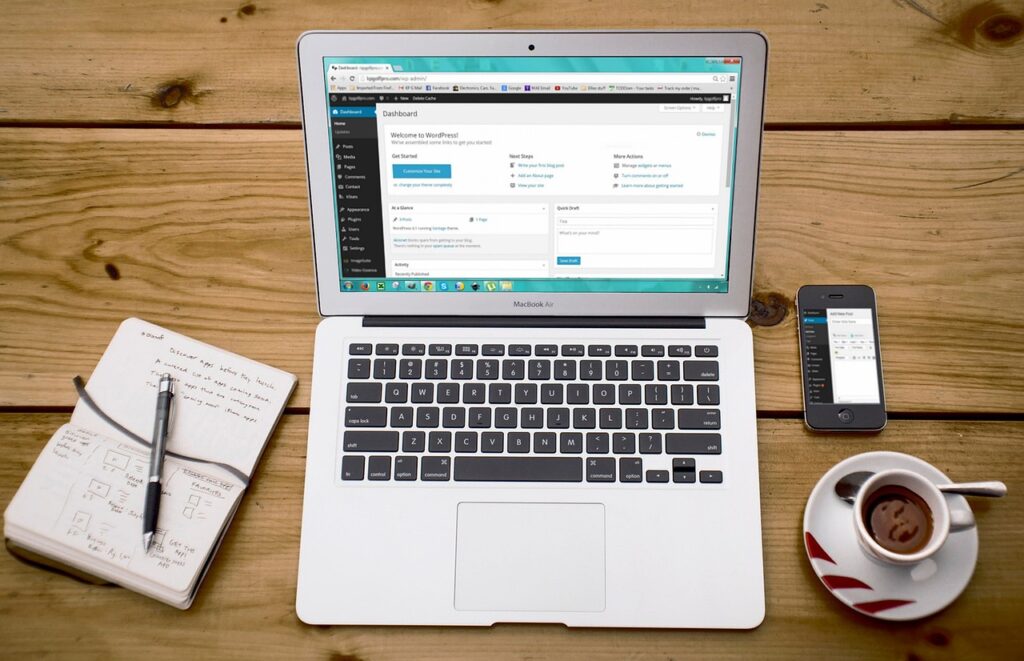When it comes to building a website on WordPress, there are a lot of decisions to make. One of the most important choices you’ll need is which page builder to use. A good page builder can make it easier to create a professional-looking website without knowing how to code. In this article, we will explore the different types of page builders for WordPress, the key features to consider when selecting a page builder, and provide a list of the top WordPress page builders. Whether you’re a seasoned web developer or a beginner, this guide is designed to help you choose the best page builder for your needs.
We understand that choosing a page builder can be overwhelming, but don’t worry – we’ll break it down into simple, practical steps you can follow. By the end of this article, you’ll better understand the options available to you and be equipped to make an informed decision.
Why Use a Page Builder for WordPress?
If you’re building a website on WordPress, you may wonder whether you should use a page builder. A page builder is a tool that allows you to create and customize web pages using a drag-and-drop interface without the need for coding or web development knowledge. There are several reasons why using a page builder for WordPress can be beneficial:
- Faster development time. Using a page builder can save time and effort when building a website, as you can create pages quickly and easily without needing to write code. This is particularly useful if you’re building multiple pages or if you have a deadline to meet.
- Improved design flexibility. Page builders give you greater control over the design and layout of your website. You can choose from a range of templates and design elements, and customize them to suit your needs. This can help you create a more unique and professional-looking website.
- Easier customization. With a page builder, you can customize your website’s design and layout without needing to hire a web developer or designer. This can save you money and give you more control over the design process.
While page builders offer many benefits, they also have some limitations:
- Potential performance issues: Using a page builder can slow down your website’s loading time, particularly if you use fewer design elements or plugins. This can negatively impact user experience and search engine rankings.
- Learning curve: While page builders are designed to be user-friendly, there can still be a learning curve involved, particularly if you’re new to web design. Getting familiar with the tool and how it works may take some time.
Overall, using a page builder for WordPress can be a good option for those who want to create a professional-looking website without needing to write code. However, it’s important to be aware of the potential limitations and to choose a page builder that meets your needs and goals.
Types of Page Builders for WordPress
There are several types of page builders available for WordPress, each with their own unique features and benefits. Here is an overview of the most common types:
- Drag and drop page builders: These page builders allow you to create pages by dragging and dropping pre-built design elements onto a canvas. They typically offer a wide range of design elements, such as images, text, buttons, and forms. Examples of drag and drop page builders include Elementor, Beaver Builder, and Divi.
Pros:
- User-friendly, even for those without web design experience
- Offer a wide range of design elements
- Can be used to create complex layouts and designs
Cons:
- May have performance issues if too many design elements are used
- Can be limiting in terms of customization options
- Visual page builders: These page builders use a visual interface to allow you to design and customize pages. They typically offer more advanced customization options than drag and drop page builders, such as custom CSS and JavaScript. Examples of visual page builders include Oxygen and Visual Composer.
Pros:
- Advanced customization options
- Offer more control over design elements
- Can be used to create complex layouts and designs
Cons:
- Steeper learning curve than drag and drop page builders
- May have performance issues if too many design elements are used
- Traditional page builders: These page builders require more technical knowledge than drag and drop or visual page builders. They involve writing code to create custom page layouts and designs. Examples of traditional page builders include WPBakery and SiteOrigin Page Builder.
Pros:
- Offer more customization options than drag and drop or visual page builders
- Can be used to create highly customized designs
Cons:
- Steep learning curve
- Not suitable for beginners or those without web development experience
Overall, the type of page builder you choose will depend on your needs and level of expertise. Drag and drop page builders are a good option for beginners or those without web design experience, while visual page builders are ideal for those who want more advanced customization options. Traditional page builders are best for experienced web developers who are comfortable with writing code.
Features to Consider When Choosing a Page Builder for WordPress
When choosing a page builder for your WordPress website, it’s important to consider several key features to ensure that you choose a tool that meets your needs and goals. Here are some of the most important features to consider:
- Ease of use. A good page builder should be easy to use and user-friendly, even for those without web design experience. Look for a page builder with a simple and intuitive interface that allows you to create pages quickly and easily. Examples of page builders known for their ease of use include Elementor and Beaver Builder.
- Design flexibility. The ability to customize your website’s design is one of the primary reasons to use a page builder. Look for a tool that offers a wide range of design elements, such as text, images, videos, and buttons, as well as pre-built templates and layouts. Examples of page builders with strong design flexibility include Divi and Oxygen.
- Customization options. In addition to design flexibility, choosing a page builder that offers a wide range of customization options is important. Look for a tool that allows you to customize the styling of your design elements, as well as add custom CSS and JavaScript. Examples of page builders with strong customization options include Visual Composer and WPBakery.
- Compatibility with themes and plugins. Finally, choosing a page builder compatible with your website’s theme and plugins is important. Look for a tool that integrates seamlessly with popular themes and plugins, and that is regularly updated to ensure compatibility with the latest version of WordPress. Examples of page builders known for their compatibility include Beaver Builder and SiteOrigin Page Builder.
Overall, choosing the right page builder for your WordPress website requires careful consideration of the most important features. By prioritizing ease of use, design flexibility, customization options, and compatibility with themes and plugins, you can ensure that you choose a tool that will help you create a professional-looking and highly functional website.
Conclusion
Choosing the right page builder for your WordPress website is an important decision that can significantly impact your site’s appearance, functionality, and performance. This article explores the benefits of using a page builder, including faster development time, improved design flexibility, and easier customization. We’ve also discussed the different types of page builders available, including drag and drop, visual, and traditional, and provided examples of each.
In addition, we’ve highlighted the key features to consider when choosing a page builder, such as ease of use, design flexibility, customization options, and compatibility with themes and plugins. You can choose a page builder that meets your specific needs and goals by prioritizing these features.
Finally, we’ve provided a list of the top WordPress page builders, including Elementor, Divi, Beaver Builder, Visual Composer, and SiteOrigin Page Builder. These tools have been chosen for their ease of use, design flexibility, customization options, and compatibility with themes and plugins.
Overall, by carefully considering the benefits of using a page builder, the different types available, and the key features to look for, you can choose a tool that will help you create a professional-looking and highly functional website that meets your specific needs and goals.


